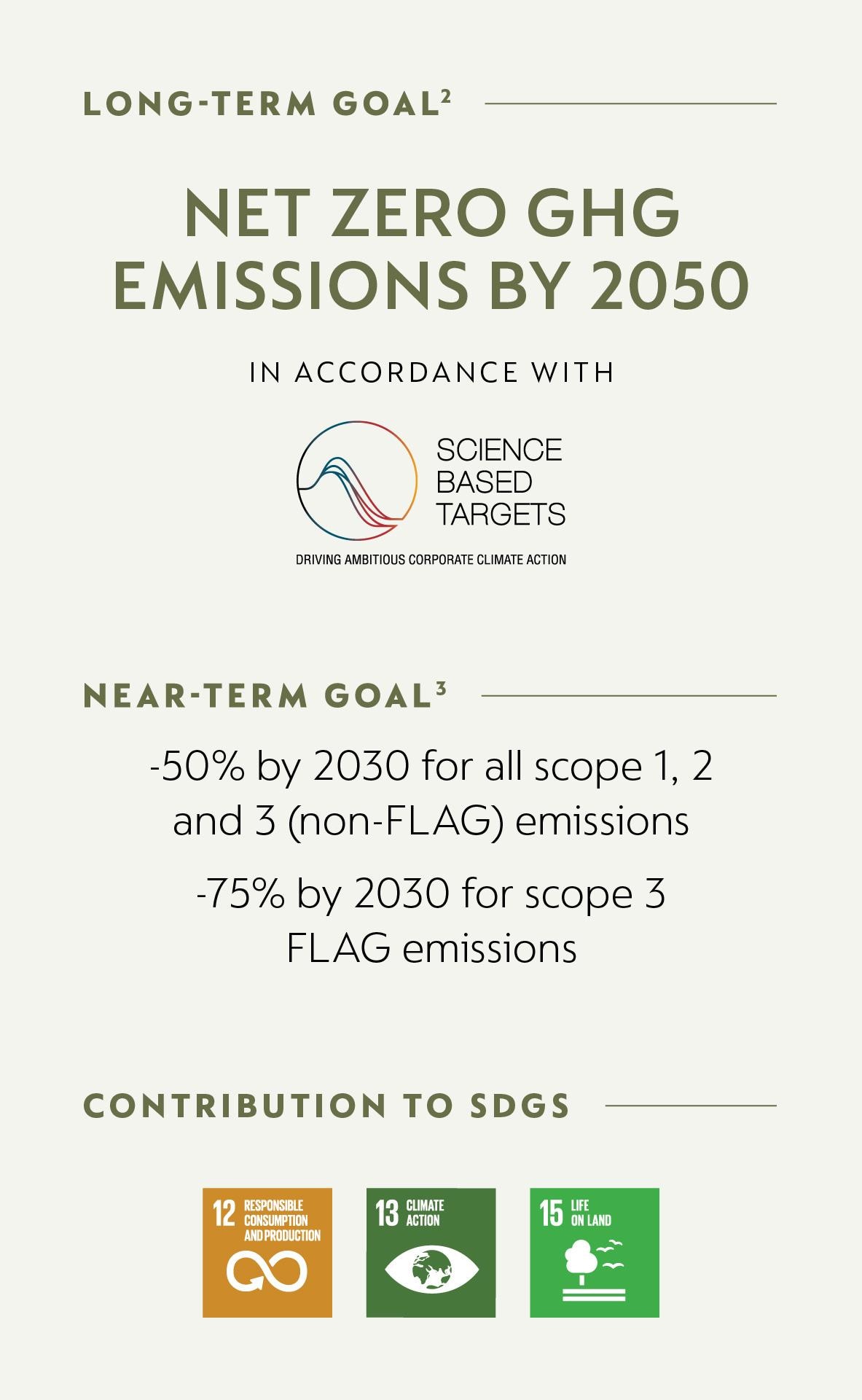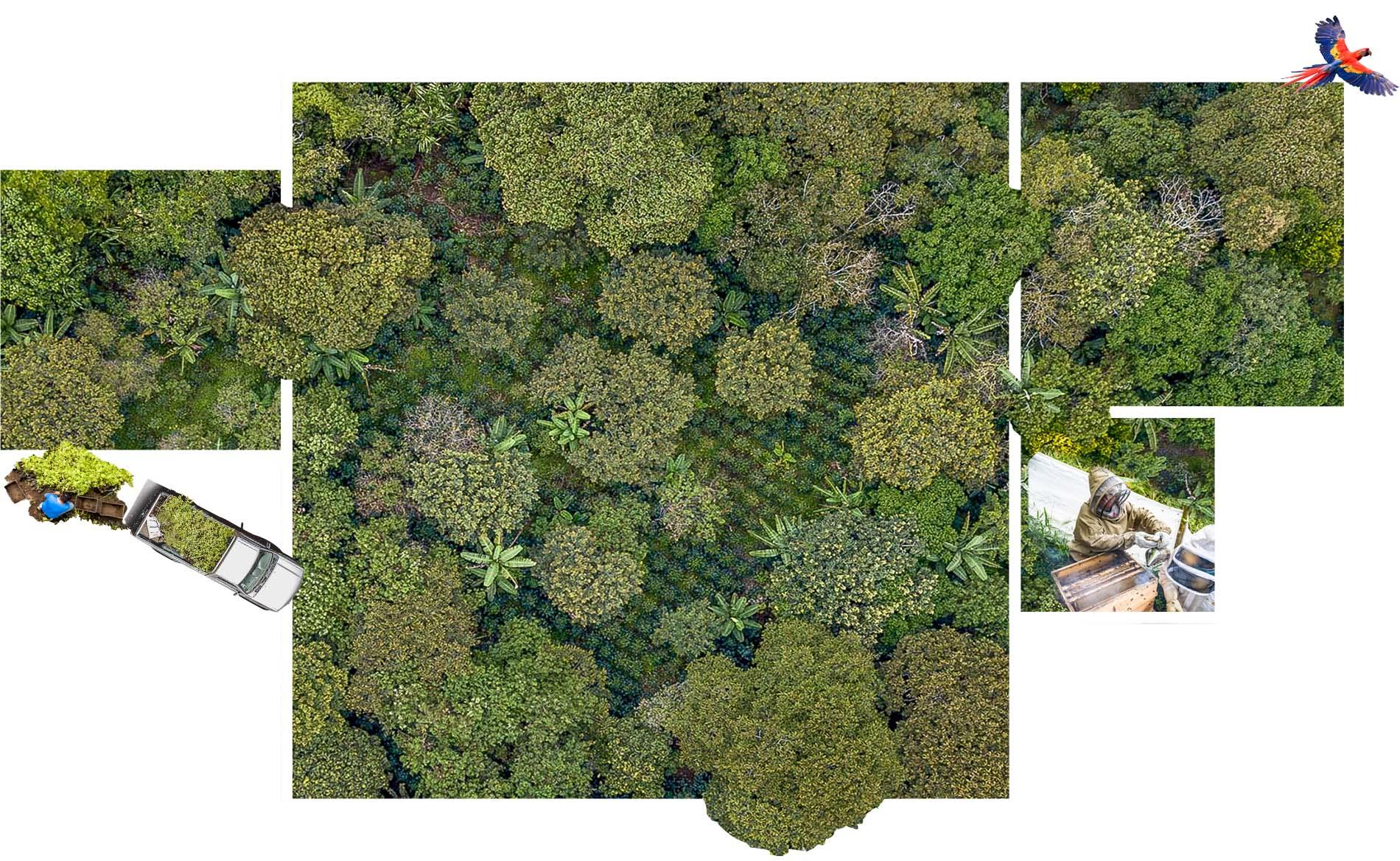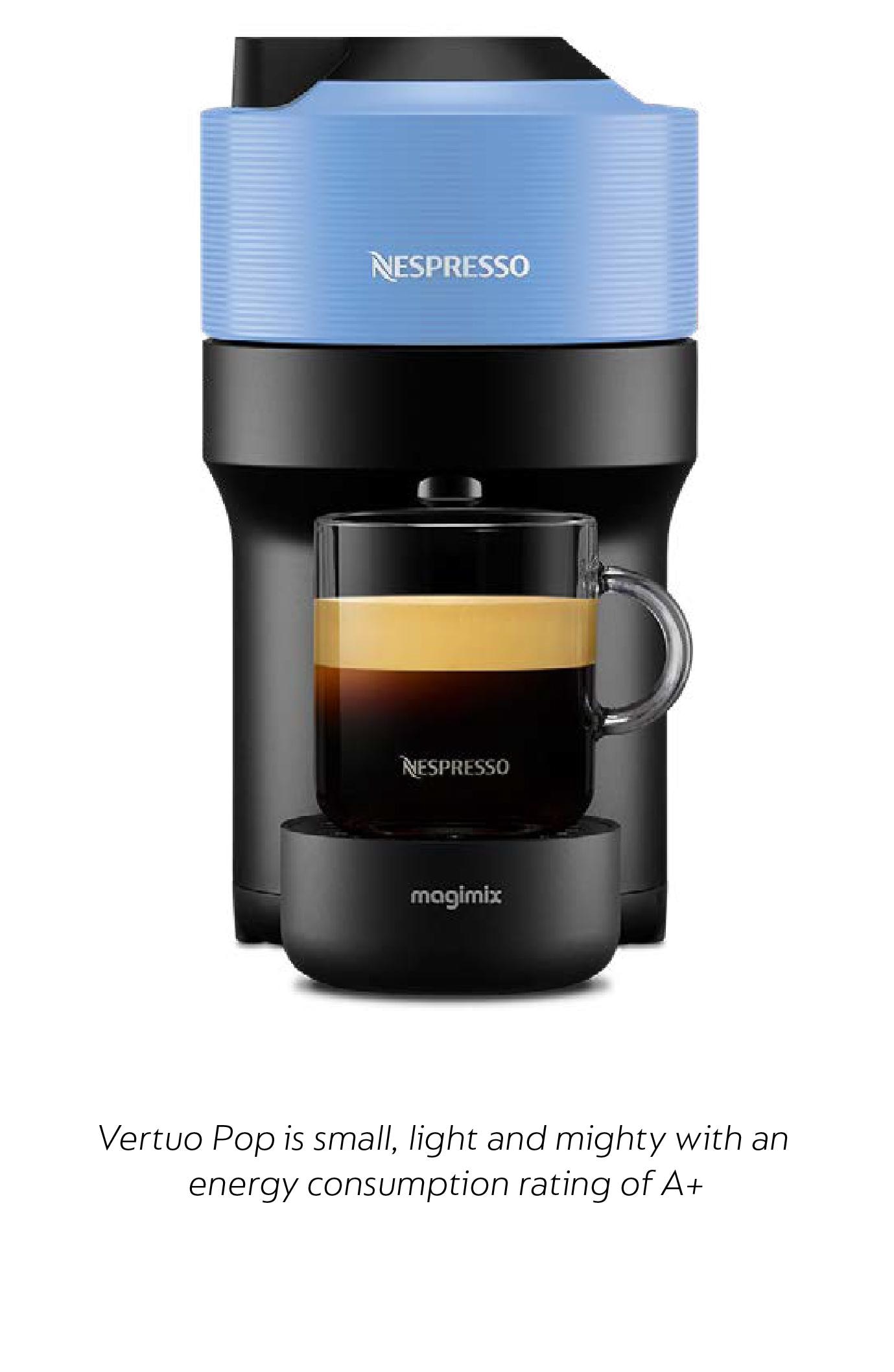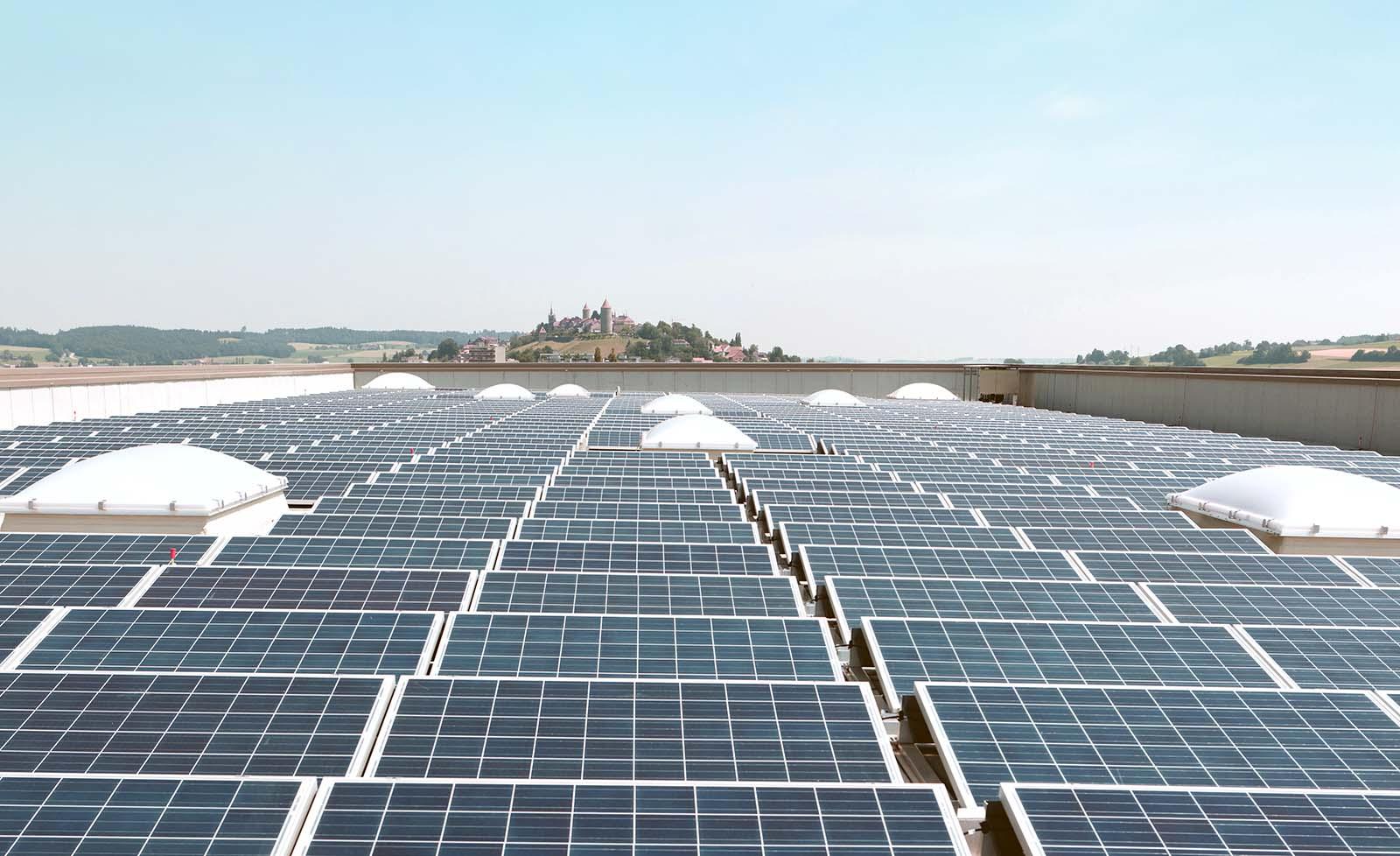Article published in: March 2023
Article updated in: April 2025
A LOW CARBON ECONOMY IS THE ONLY FUTURE
Coffee farmers are seeing the impacts of climate change first hand. Extreme weather patterns are becoming more and more prevalent and scientific forecasts predict that by 2050, climate change could reduce the global area suitable for coffee production by 50%1.
Nespresso’s climate journey began in 2009 and we are taking decisive action on the causes and consequences of climate change both within and outside our direct control. Science-based targets now provide companies such as Nespresso, with a clearly defined pathway to reduce emissions and limit global warming to 1.5°C.

THE ROAD TO NET ZERO
Nespresso’s reductions and removals contribute to the Nestlé target of net zero by 2050, which is approved by the Science-based Targets initiative (SBTi)2 and aligned with the Paris Agreement, with a milestone to reduce by -75% GHG emission in Green Coffee by 20304. We submitted our net-zero targets to SBTi in October 20235.
One ongoing challenge we face in reducing emissions, is doing so, at the same time as our business grows. Nevertheless, we will continue to take bold actions across our value chain so that we can reduce our GHG emissions by 50% by 2030 vs our 2018 baseline. Our net-zero roadmap also includes carbon removals. We have long believed in natural climate solutions that benefit both people and the planet. That’s why, between 2014 and 2024, Nespresso and its partners have delivered 10 million trees in AAA landscapes, 9 million of which will contribute to carbon removal6.
AGRICULTURE REPRESENTS THE MOST SIGNIFICANT IMPACT AND THE LARGEST REDUCTION OPPORTUNITY
Our corporate footprint is calculated according to the World Business Council for Sustainable Development (WBCSD) and the World Resources Institute Greenhouse Gas Protocol. It is the sum of GHG emissions from our owned assets (factories and offices), our suppliers and our consumers.
Just one percent of our total GHG emissions lie within Scope 1 and 2 – those emissions generated within our manufacturing, overheads and distribution. The remaining 99% reside within Scope 3 (i.e. occurring outside of our owned assets and direct control) as highlighted in the pie chart.
The most significant impact (39%) is attributable to the green coffee supply – coffee cultivation on farms and cherry processing. This is why we are building on 20 years of direct farmer relationships through the AAA Program and accelerating their transition to regenerative agriculture, while improving their prosperity and resilience. It is estimated that the AAA Program already sets an industry leading benchmark for average green coffee emissions7. Primary data from 10 key origins revealed a lower emissions factor in green coffee for some origins, bringing our overall emissions factor below its current level8. At the other end of our value chain, our direct to consumer business model puts Nespresso directly in the homes and hands of coffee drinkers worldwide, which strengthens our ability to influence sustainable behaviours.

“WE HAVE COLLATED STRONG PRIMARY DATA TO SHOW WHERE OUR EMISSIONS COME FROM AND HAVE A CLEAR PATHWAY FOR A NET‑ZERO ACCELERATION TOWARDS 2035, AND IN GREEN COFFEE EVEN EARLIER.”
BENJAMIN GYGER, BUSINESS MANAGER ZONE APAC, AND FORMER GLOBAL HEAD OF STRATEGY, NESPRESSO
THREE LEVERS FOR DECARBONISATION
To achieve our ambitious goals, we need to ramp up the work already underway, with three levers of decarbonisation central to this intention.
1.
Accelerating the transition to regenerative agriculture

The continued expansion of regenerative agriculture across AAA farms will provide many benefits. Firstly, nature-based practices that replace the use of fertilisers, without compromising on quality, will play a central role. Our goal is to source 95% Regenerative Coffee by 2030. Carbon removals, scaling agroforestry and innovating with long-term carbon capture solutions in the AAA supply chain, will make an important contribution as well. We aim to plant an additional four million trees every year. In addition to tree planting, regenerative practices, including crop diversification and reduced tillage, can enable soil to store an even greater amount of CO2 from the atmosphere. By accelerating regenerative agricultural practices and carbon removals in the AAA supply chain, our next milestone is to reduce by -75% GHG emission in Green Coffee by 20303.

2.
Innovation and renovation in products, systems and markets
We plan to close the gap by investigating circular innovations with our suppliers, monitoring progress and making meaningful reductions as we learn. As examples, 80% of the aluminium we use for home-use capsules is recycled aluminium and we are increasing the use of recycled and recyclable materials in the design of machines and accessories, as well as promoting machine refurbishment through our RELOVE campaign.

3.
Optimisation of energy and logistics

We take definitive action to increase efficiency and the use of renewable energy across our operations. Green coffee delivery includes transport by truck from farm to harbour, transport by ship from origin harbour to Rotterdam and transport by train from Rotterdam to Nespresso factories. We are currently exploring lower-carbon fuel options with our road and sea freight partners to reduce carbon emissions on land and at sea. All three of our Nespresso production centres are zero waste to landfill, and our production processes have been optimised to ensure heat and water are recovered and reused whenever possible. Inspired by BREAM and LEED certification, The Positive Boutique Protocol is a performance scorecard that will help all permanent Nespresso boutiques drive further positive impact.
Explore these levers in more detail in The Positive Cup:
Accelerate Positive Impact Towards 2030.
Discover The Positive Cup 2024 Progress Status:
1. Source: Expected global suitability of coffee, cashew and avocado due to climate change | PLOS ONE.
2. We are committed to achieving Net zero GHG emissions by 2050 in accordance with SBTi standards, and are now accelerating towards our SBTi 2030 near-term targets, approved in May 2024.
3. Compared to 2018 Baseline.
4. See our Near-Term SBTi target to reduce our absolute scope 3 FLAG (Forest, Land and Agricultures) emissions in The Positive Cup 2024 Progress Status document page 7.
5. As per our SBTi 2023 submission. We are aiming to accelerate to achieve the target by 2050. Nespresso SBTi near term and long term targets were approved on May 1st, 2024.
6. Cumulative data 2014–2024.
7. Average green coffee emissions based on the World Food LCA database) and Green coffee supply represents the largest opportunity for reduction.
8. According to 2022 primary data, the weighted average emission factor for the top 10 origins of Nespresso green coffee is 3.5 kg of CO2 e per kg of green coffee.
This article uses images subject to copyright © PUR / Ana Karina Delgado & Tomas Mendez / www.elegante.co.

